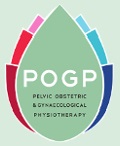Did you know that low vitamin D levels have been linked to an increased risk of incontinence and a number of problems related to bone mineral deficiency during pregnancy and post-natally? This is because vitamin D is essential for maintaining bone and muscle strength.
So who’s at risk of vitamin D deficiency?
- Women (particularly women who are pregnant, breastfeeding and post-menopausal),
- the older adult, and
- the obese.
Urinary incontinence
Recent research shows that women with vitamin D deficiency are more likely to suffer from problems with their pelvic floor and have a whopping 170% increased risk of urinary incontinence.
Given the fact that excess weight (especially if you’re ‘apple-shaped’) can make stress urinary incontinence worse, this is a double whammy. Losing weight not only reduces the pressure on your bladder (and evidence shows it can almost half the risk of episodes of incontinence) but it also increases vitamin D levels.
Bone mineral deficiency
Low vitamin D levels are more commonly related to problems with bone mineral deficiency, as it encourages the absorption and metabolism of calcium. This is particularly the case during and after pregnancy, as women who are pregnant and breast-feeding need more vitamin D than others.
Osteomalacia in breastfeeding women
Postnatal mums who are breastfeeding and have low vitamin D levels are at increased risk of developing osteomalacia (called ‘rickets’ in children). That’s when bones become soft and are prone to pain and fractures due to inadequate or defective bone mineralisation. Black and Asian mums are particularly at risk.
Low vitamin D levels & reduced intrauterine bone mineral acquisition
In fact there’s evidence to show that maternal vitamin D insufficiency during pregnancy is linked to reduced bone mineral acquisition during intrauterine growth and early postnatal life. In other words, maternal under-nutrition can programme a child’s bone growth, contributing to the risk of osteoporosis and fracture in later life. (Note: maternal smoking also affects a child’s skeletal growth, which is why pregnant women are advised to stop smoking.)
Transient osteoporosis in pregnancy
There’s also a quite rare condition involving maternal bone demineralisation that affects some pregnant women in their third trimester when they develop ‘transient osteoporosis’ of the hip. This usually presents with sudden, severe groin pain and can lead to fractures and immobility (although this is rare). Although it’s not clear what causes it, it is linked to increased maternal demands for calcium during pregnancy and maternal malnutrition plays a role.
Finally, there’s some recent evidence which suggests that post-menopausal women do not absorb enough vitamin D in their diets.
So how do you increase or maintain adequate vitamin D levels?
- Get plenty of sunlight. Lack of sunlight is the main reason people get vitamin D deficiency. The National Osteoporosis Society recommends 10 minutes daily sun exposure to bare skin between May and September (see The National Osteoporosis Society’s Annual Sunlight Campaign recomendations)
- Eat foods that are relatively rich in vitamin D, for example, oily fish and egg yolks and/or fortified breakfast cereals
- Supplements: if you’re not getting all the vitamin D you need by eating a healthy balanced diet and by getting some sun, the Department of Health recommends that certain groups of people take vitamin D supplements, including all pregnant and breastfeeding women (see Department of Health leaflet).




